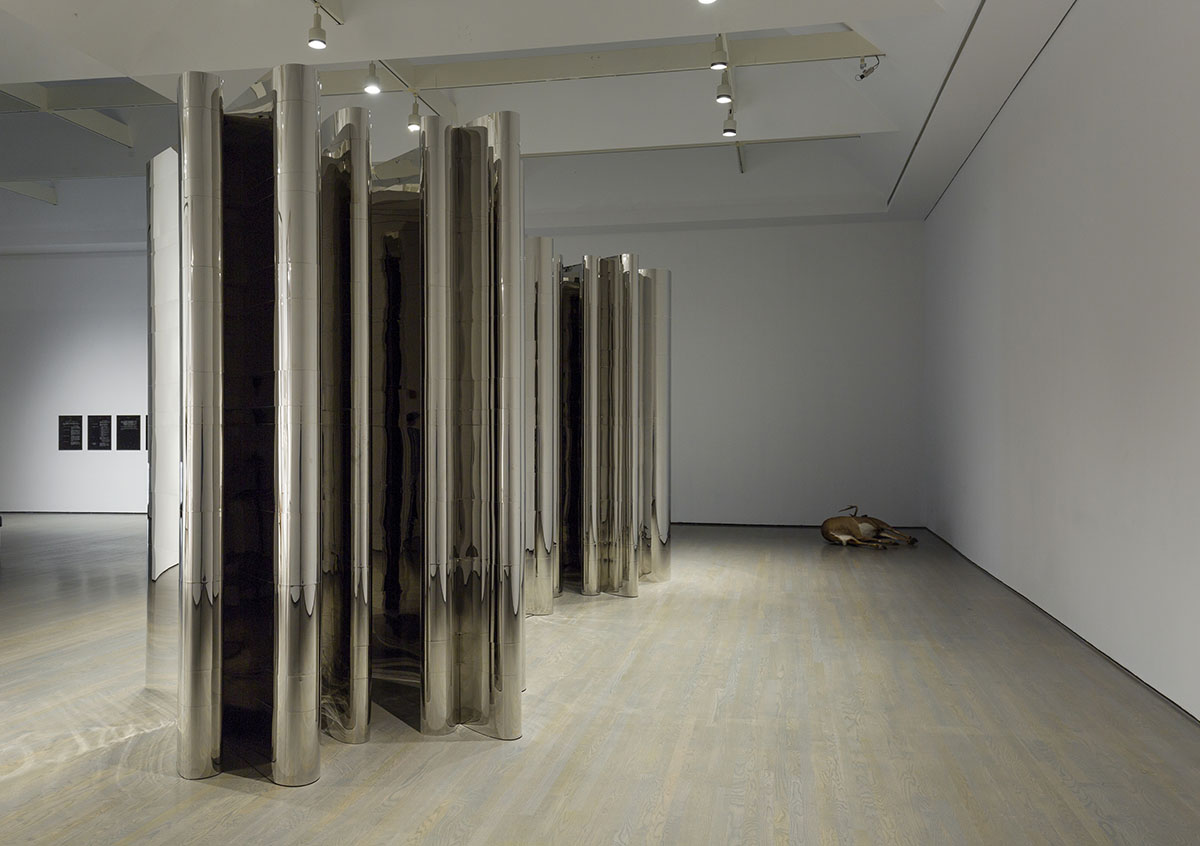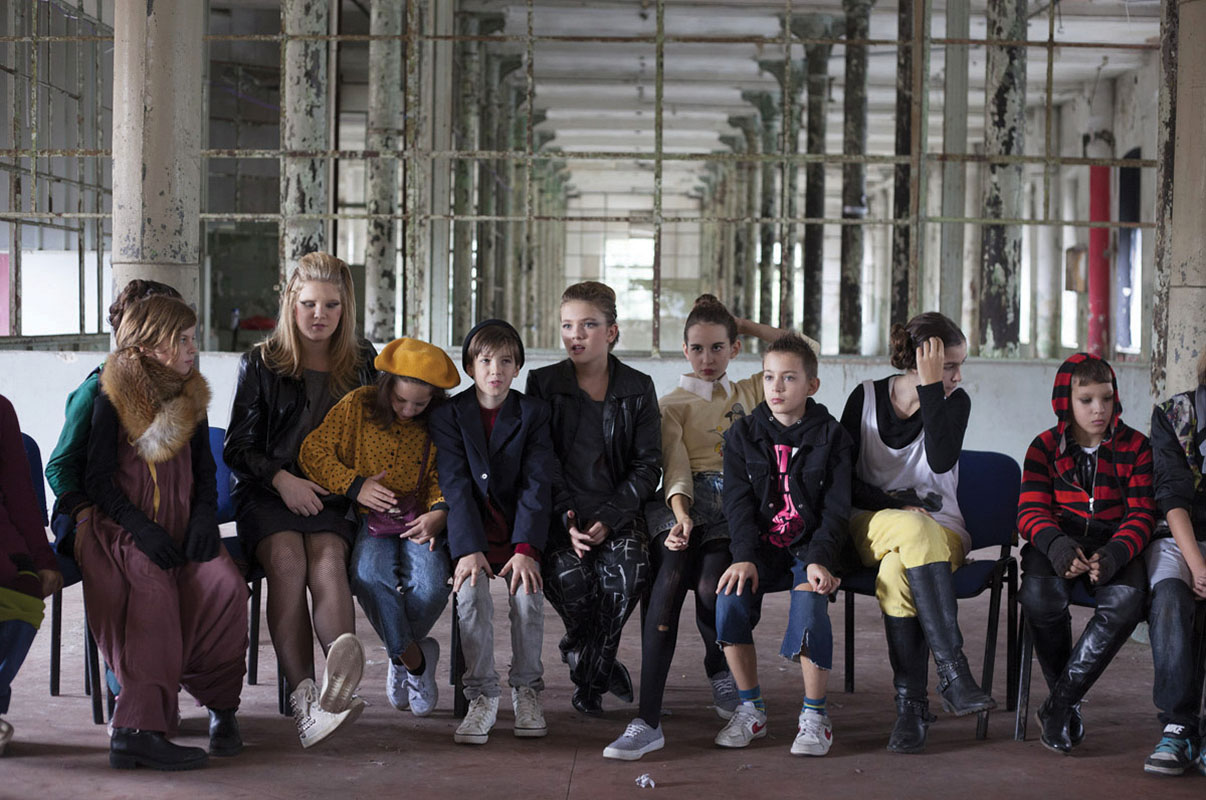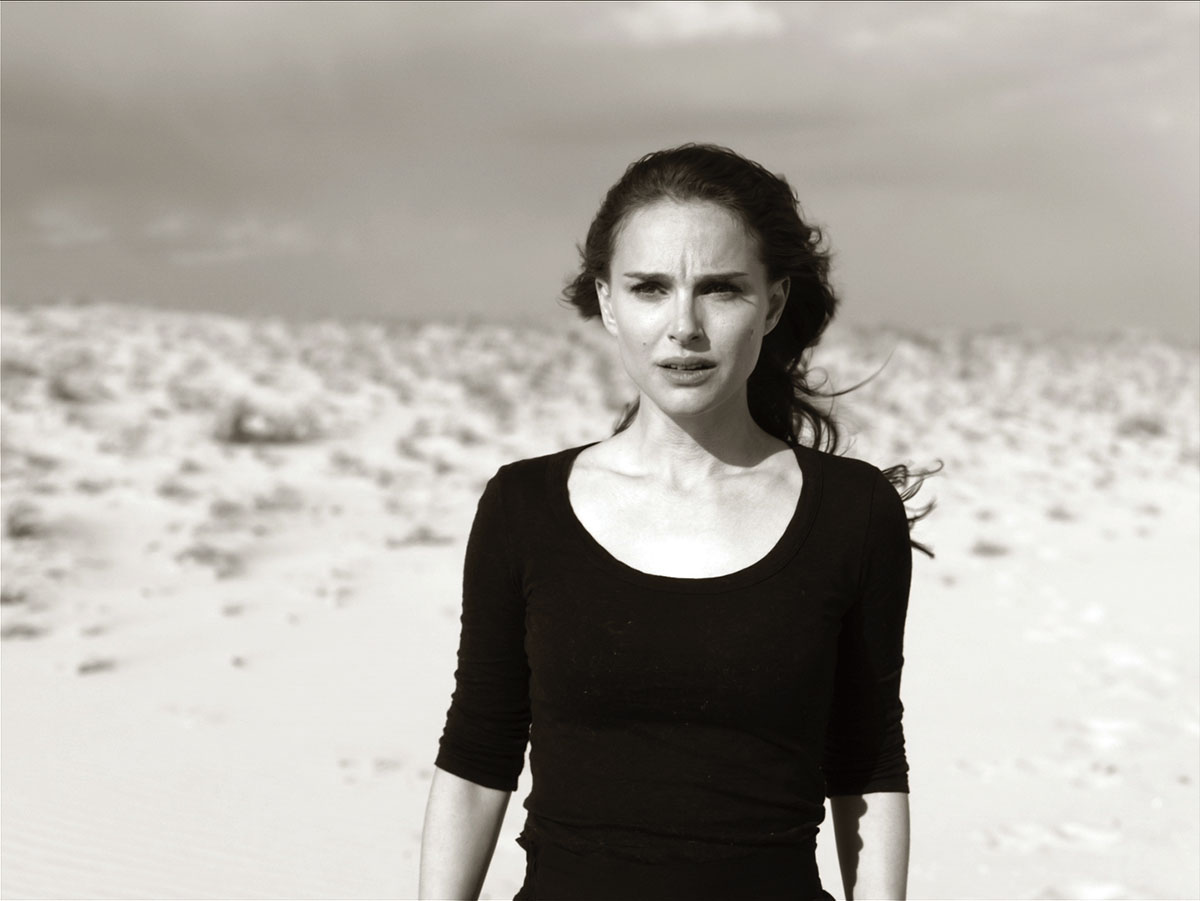Analyzing the present, and predicting what‘s to come, at the 2014 Montreal Biennale.

Authors of science fiction know that predicting the future is a function of analyzing the past and projecting those findings forward. There’s a lot of space for nuance in these extrapolations, which is part of why we find sci-fi so compelling—you can let the Butterfly Effect run rampant and create worlds alien and frightening, or you can hone in on small, but significant, differences and dive deep into their ramifications. Ultimately though, looking to the future is about looking for change — an operation that, at its root, is binary.
Let’s be clear here: things can’t change but also stay the same, regardless of any invocation of that folksy truism. Implicit in the passage of Past to Future is a narrative of improvement or deterioration, and taking either position serves as a judgment of the Present. That is, if you think the future looks bleak, than you must already think that the present is troubled, but if you think the future is looking bright, then you imply that the present is as it should be. Can there be space in this apparently binary choice to balance utopianism and cynicism, to prevent an exhibition from being excessively positive (and uncritical) or negative (and fatalistic)?

Given the relationship of Montréal to the former model of futurism, I think the answer is clear. L’avenir, it hardly needs be said, is not the city’s first large-scale exhibition about the future, and despite the obvious differences of scope and intention between Expo ’67 and the current iteration of the Biennale de Montréal, it’s neither arbitrary nor frivolous to draw up a comparison. The 47 intervening years have brought into stark relief the overly brief lifecycle of the modernist project embarked upon by then-mayor Jean Drapeau. That project, which has sapped the city’s coffers since the 1960s, has aged poorly by any measure. As governments at all levels struggle to contain infrastructural decay and a relative lack of growth compared to the rest of Canada, it can be hard not to take a dim view of the modernist extravaganza, despite the ways in which it has helped define Montréal’s contemporary image and topography.
No, the future is not something to take lightly. So perhaps it was a foregone conclusion that L’avenir would dwell on the darkness we need to confront as we move ahead. But, from an ethical standpoint, this is a strong approach, as artists have long held some of the wisdom and perception wider society lacks. Promoting artists’ contributions to and proposals for our collective future could, if given good treatment and consideration, be of pivotal importance; but does it not also present a curatorial conundrum? Ambivalence and tough-but-fair admonishments of contemporary late capitalism don’t exactly put bums in seats.

Some of the very best work in the Biennale confronts this problem directly by reifying nebulous ideas into material, engaging objects. A clear winner in this regard is Richard Ibghy and Marilou Lemmens’ tremendous The Prophets (2013), which takes the on the streams of anxiety-inducing data generated by contemporary society, endlessly being interpreted and reinterpreted. The artists have abstracted the data to its least intelligible form as blank charts and graphs, and recreated them as dozens of tiny sculptures covering a thirteen metre-long table. Each graph is individually delightful to behold and consider, but holds no intrinsic value in itself—a fact easily forgotten about data in general. It’s a crowd-pleaser, a work that neither dilutes its message nor obfuscates it, but presents a challenge that remains enjoyable to tackle. Ibghy and Lemmens’ video installation at the nearby VOX Centre pushes this useless informationality even further, imagining a “Golden USB,” similar to the record sent out with NASA’s Viking probes, which contains the documentation of all objects on Earth. Of course, as space travel has increasingly become the domain of private industry, the documentation takes the form of a catalogue. Shown on multiple monitors, the perpetual cacophony of the artists setting up and taking down objects while enacting odd and meaningless activities in service of producing a manifest of goods skewers the excess of product-less labour that propels the economic engine of the planet.
A collaborative performance piece assembled by the Swedish duo Goldin + Senneby offsite at Simon Blais Contemporary manages to render visible the future itself in a limited, but illuminating, way. In it, an actor performs as himself out of a Pinter-esque script provided to audience members. The audience is invited to enter into the performance, playing the part of a narrator and occasional director, necessitating reading ahead and understanding what’s to come. The script plays on this limited forecasting, forcing the actor to undertake scripted actions in increasingly complicated and painful-seeming interations. Even then, there are points at which the performance can go in different directions, making looking ahead while staying apace with the actor a taxing experience. Commanding the actor, we remove his agency, but ours is also removed; even as we make decisions that seem relatively free, the momentum of the script’s diagesis traps us in an unheimlich skewering of the sense of free will.

Vernacular voices in the videos of Althea Thauberger and Emanuelle Léonard also provide compelling entryways into a discussion of what’s to come. In Thauberger’s Preuzmimo Benčić (2014), a cast of more than fifty Croatian children take on the lives and jobs of historical employees of an abandoned factory as they re-enact the past and present of the complex, from sugar processing plant to worker’s syndicate to gentrifying tourist feature. As they work to make sense of the history they’ve entered into, the children speak with surprising insight and heartbreaking pragmatism in turn. Conversely, in Léonard’s Postcard from Bexhill-on-Sea (2014), when elderly couples in an English seaside town are asked point-blank about what they think of the future, the answer is they don’t. Though the respondents are unfailingly charming, their laissez-faire attitude is chilling when you consider how strong a political pressure the aged are on government. Very few of those interviewed consider their culpability as contributors to the contemporary mess they nonetheless decry. The women in Léonard’s La Providence (2014), meanwhile, have spent their whole lives devoted to the future—as nuns, their future home is heaven. Of all the voices in the exhibition, theirs are the most confident and positive, but simultaneously the hardest to fathom.
The future is as wide and nebulous a theme as can exist, but much of the work resonates readily with the digitally inclined. Of great contemporary concern is not only data, but its availability, abundance, and overabundance, particularly as it comes via the internet. Suzanne Treister investigates domestic spying and other intangible forms of governmental abuse of power through HEXEN 2.0 (2009-2011), a series of drawings in the visual idiom of kabbalah and tarot cards. The drawings’ stylistic provenance immediately point to the conspiracy-theory tone of conversations about secret spying. (Treister’s mastery of occult imagery is wonderful, and the images are beautiful in their own right.) But, given the revelations of whistleblowers like Edward Snowden, the message in her maps of nefarious inter-governmental connectivity is readily absorbed. Other works, like Simon Denny’s All You Need Is Data: The DLD 2012 Conference REDUX Rerun (2012) and Mikko Canini’s Untitled (Interview) (2011) and Untitled (Lecture) (2012) manage to present powerful realizations of the politics of data in an approachable but undidactic way.

All You Need Is Data is an acute shakedown of the TED Talk phenomenon, recording a flood of ambiguous data from a digital tech conference in Munich via a mazelike structure of pipes and canvases. The repeated images of hip-looking experts and collections of pithy quotes quickly begin to blur into a morass of information fatigue. But the work is really quite funny—you can see right through the empty signifiers that turn up again and again: cool-guy presenters indistinguishable from one another with their Steve Jobs-levels of smugness and triumphalism and the boring sameness of their buzzwords. As these patterns become apparent, they cast a long, dark shadow over the TED-Talk-Industrial Complex, whose emphatically messianic style is slowly colonizing our discourse on futurity.
Playing on similar sense of informationality—that feeling that something is true because of the way it has been presented—are Mikko Canini’s slide presentations. In each, an unknown data scientist talks about the construction of a body of knowledge—in one case, the founding of a university—in vague and discomforting terms. Between them floats a kind of eerie hyperdetermination, as though the non-information the narrator speaks is self-evident and necessary, while remaining inscrutable.
A good measure of the strength of this work is its ability to hold attention in the packed and bustling Musée d’art contemporain. With nearly half the work being video-based, and a significant portion of long enough duration to warrant taking a seat, the question of audience becomes important. The CIAC-organized Biennale’s recent merger with the MAC’s Québec Triennial makes it the single largest periodic art exhibition in the province, and probably the country, with a visitor count to match. I think it’s fair to ask if such a large slice of the public, most of whom ostensibly won’t be regular viewers of art, can be asked to stay the course and spend the requisite time with the work. Can the curatorial team be given credit for showing confidence in their audience, or is the heavy cant towards video an oversight? Having spent many hours with the work, I can say that it’s largely very strong, but I had the motivation to return multiple times. I’m not convinced that many others felt the same way.

I don’t mean to imply that difficult work shouldn’t be included in a survey like this — in fact, it’s potentially the best way to introduce viewers to what they wouldn’t otherwise encounter. Nonetheless, the curators’ role must encompass making space in our brains for what’s potentially disturbing, a job that’s larger than didactic panels. For instance, it’s very easy to be pulled in to view the installation of Andrea Bowers’ Courtroom Drawings (Steubenville Rape Case, Text Messages Entered As Evidence, 2013), 2014, a huge collection of magnificently drawn text message transcriptions in flawless iPhone-font style. But the texts quickly turn graphic, and it’s incredibly easy to suddenly find yourself reading brutal details of the sexual assaults perpetrated on a young woman by a squad of young football players—her classmates. What is gained by this cheap shock? A sign with a trigger warning wouldn’t prevent the work from achieving its goals. That such signs exist for Jillian Mayer’s 400 Nudes (2014), a collection of relatively harmless nude selfies, and Thomas Hirschhorn’s Touching Reality (2012), a video containing real images of horrific violence, but not for a work of equally painful sexual violence, makes me wonder how much the audience is considered, after all.
The signs before Mayer’s and Hirschhorn’s works are especially confusing because they show a disappointing tone deafness to the very “ethics-based and practical philosophy” espoused at the outset of the show. 400 Nudes, a large-scale project which involved Mayer Photoshopping her face onto the naked bodies of 400 women whose private photographs had found their way onto the very public net through nefarious means, but nowhere in the surrounding discussion of it appears the word consent. The merits of the work aside, why isn’t there any mention of the artist’s potential revictimization of her subjects? In Hirschhorn’s video, a white woman swipes through an iPad slideshow of gruesome images of torture and war with practiced and particular motions. The bodies, splayed and rent and dehumanized, are all people of colour. How can this basic fact be overlooked? The curatorial team should be commended for including difficult work, especially where it’s well-placed to make us reconsider our political and ethical positioning. If we’re addressing the future, let’s not sit idly by but effect change! The curators seem to be aware of the necessity of ethical action, which makes gaps in judgment like these all the more disappointing.
Fortunately, most of the exhibition is coherent, relevant, and rich, with a high quality of work on display that avoids cliché and offers real insight. A viewer with the time to devote him- or herself to it has much to gain. Looking forward to the next Biennale, the increased scope and resources provided by the partnership of CIAC and the MAC make for a rosy future, indeed.
The Montreal Biennale continues at various venues throughout the city until January 4, 2015.
Benjamin Bruneau is an artist and writer based in Montreal (Tiohtià:ke), on Mohawk and Abenaki land. He is the Reviews Editor of Magenta Magazine.



